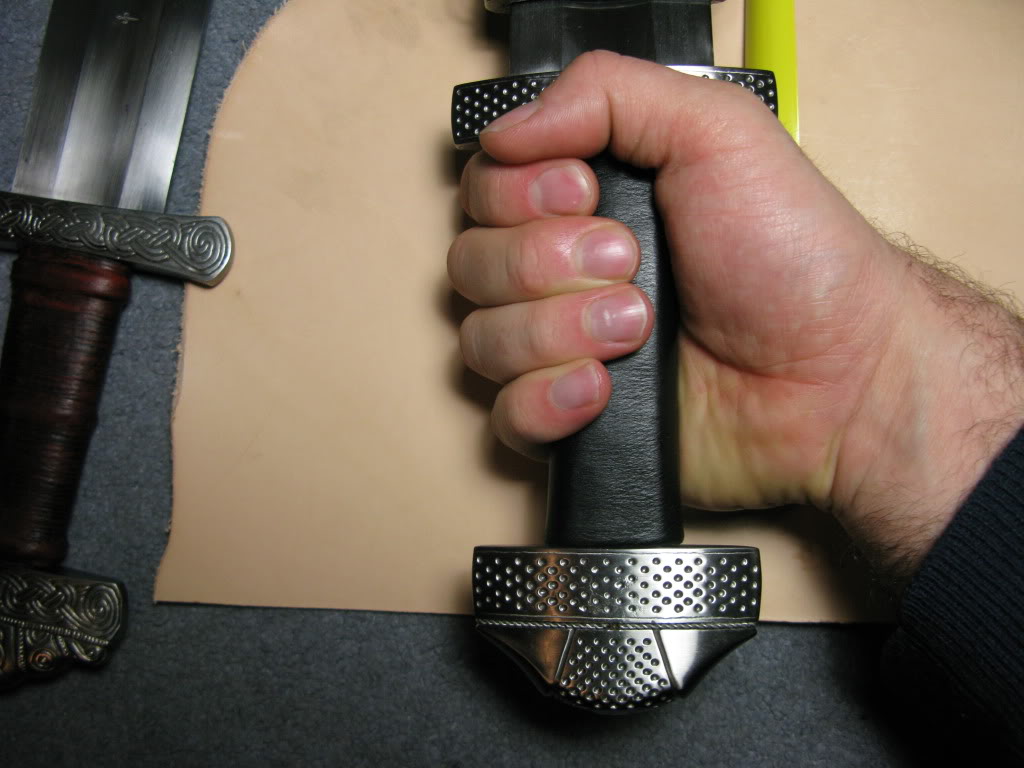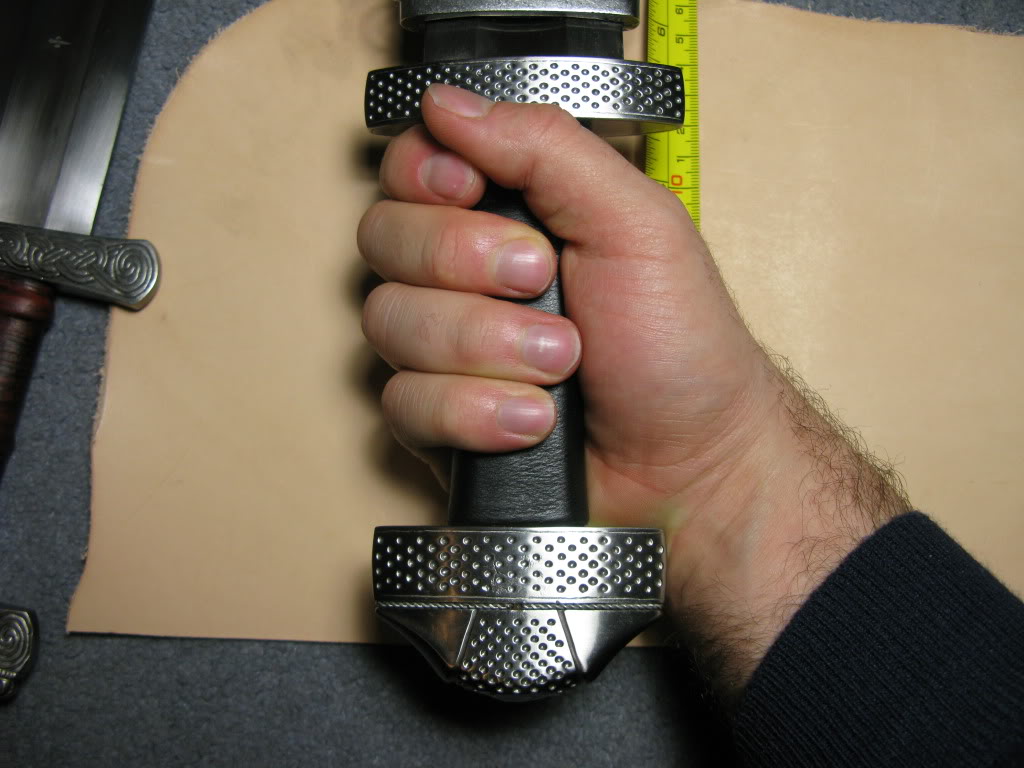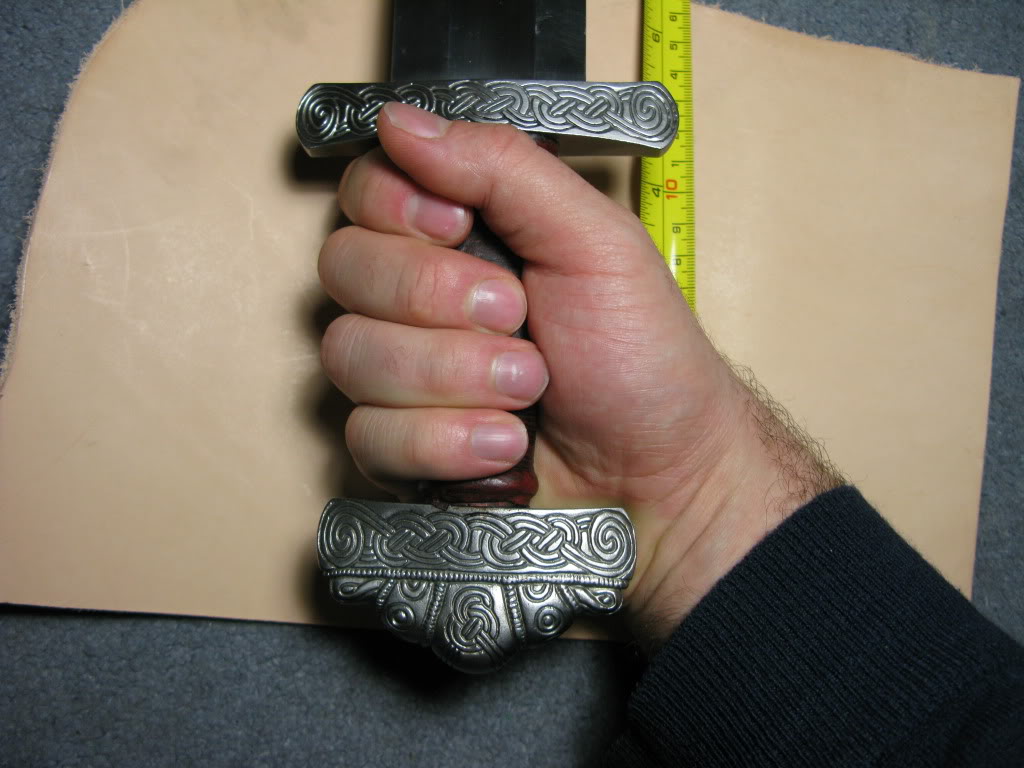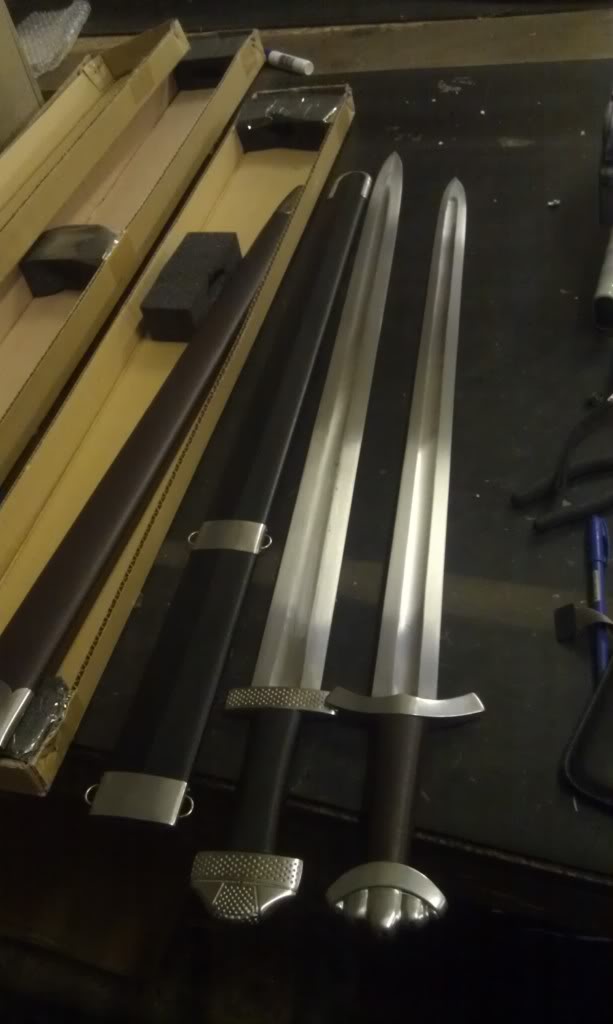
Stats taken from the Hanwei website
Hanwei Irish
Overall: 34 1/2"
Blade Length: 28 1/4"
Handle Length: 5 1/2"
Weight: 2lb 5oz
Point of Balance: 4 1/2"
Tinker Viking
Overall: 37 3/8"
Blade Length: 30 7/8"
Handle Length: 6 1/2"
Weight: 2lb 12oz
Point of Balance: 4 3/4"
Introduction
This post is a bit of an amalgamation of a thread I created on another forum, I thought that I would share my thoughts on the two swords on this forum.
When I first saw the Hanwei Irish sword on a preview of upcoming swords last yearI was incredibly excited. I love the look of Viking swords but am not yet a great fan of how they handle in my price range, so this sword with the curved grip and pommel looked ideal for me. I was not fussed about the blade's length as I am not particularly tall and the close point of balance appealed to me. For quite some time I was on the fence as to buy this as a relatively unknown sword compared to the more proven Tinker Viking.
Luckily while on a business trip I happened to be nearby the Hanwei distributor in the UK so I popped in and handled the above two swords with the intention to buy the one I liked the most.
When comparing the two against each other, aside from the obvious differences in blade length and POB the Irish was indeed much more comfortable than the tinker and I decided to go with the Irish due to this but my decision could had gone either way as I liked both swords.
The Blades
Big differences here with the two swords. Aside from the obvious difference in length the Tinker flexed strongly while the Irish was quite stiff.
The tinker has a lovely broad and flat blade, however when looking at the blade in decent light you can see grinding marks and all sorts of horrible distortions. I don’t think this is something you can polish out without removing a lot of metal. The blade features a lot of distal taper but not so much profile tapering. This is the way it should be.
The Irish was not as wide but thicker, which meant a deeper fuller and a more obvious diamond primary bevel. The sword did not have a lot of distal taper compared to the very aggressive profile tapering, which works against the viking feel of the sword.
Out of the two, the Tinker has the more “Viking” blade due to the more consistent width but both swords suffer from being overly pointy.
Grips
Both swords had almost identical grip lengths, although the Irish felt longer due to the curved pommel.
For the Irish the grip was comfortable enough to hold but was a little too rounded and not flat enough. The leather cord wrap looked pretty rubbish and is not historical, but looks easy enough to remove should you wish to re-wrap the grip.
The tinker I felt had a very flat grip with sharp ridges, which made the grip slightly uncomfortable. The leather is a cheap chromed leather, which again is easy enough to remove but you will also have to remove the string underneath should you wish to re-shape the grip.
Out of the two I felt that the tinker would really benefit from a shorter grip due to the overly long grip being unhelpful to the Handshake grip.
The Irish’s grip just didn’t feel anything like a Viking sword due to the length and roundness.
Fittings
The fittings looked nicer on the tinker, with the wired pommel looking great. The Irish fittings looked a bit bulbous and oversized especially in relation to the fairly short blade length. With regards to metal quality I believe the tinker's fittings are semi-stainless but they look pretty good. The Irish fittings have a kind of plastic look to them. I know this is not a very technical term but the metal had a kind of sheen as if it was painted over with a metallic gel pen.
Scabbard
Both scabbards are made out of fiberglass. They are OK but are quite light and have the tendency to snag the blade when sheathing the sword. The Irish's scabbard's leather has compression marks were the metal throat was hammered onto the scabbard, this is also the same for the chape. It is worth noting that the chape is over the leather on the Irish but for the tinker, the leather is cut around the chape. The scabbards do their job but out of the two the tinker scabbard seems more fragile due to the weak rings and the Irish uses better quality leather.
Sharpness
Both swords were sharp to the touch, but upon closer inspection the sharpening was sloppily done with burrs a plenty along the edge. This should be easy enough to correct with something as simple as a ceramic sharpening rod or a kitchen steel. The secondary bevels are noticeable but not a problem for me as it is something i expect in this price range.
Handling
I enjoyed handling and dry cutting with both swords.
The Tinker had a special presence, the balance was just right but was difficult to handle due to the long grip, which favoured the hammer grip but was not comfortable due to the pommel shape.
The Irish had plenty of weight in the blade, but the low point of balance made the sword feel very un-natural. There were no wind downs and you can snap cut with the sword.
Conclusions:
Tinker
+Better handling blade
+Nice looking pommel and guard
-Grinding and forging marks are very apparent
-An overly long grip with sharp ridges making for an uncomfortable hold
Irish
+More robust blade
+comfortable grip
+Better polish with much less forging marks
-Medium weight blade with low POB felt very un-natural
-Oval grip
Both swords had overly long grips, it had more of a negative effect on the tinker where a short grip would be advantageous for the handshake grip.
Both swords have sloppy peen jobs, which is very ugly to look at.
Both swords were overly pointy.
I purchased the Hanwei Irish as I initially loved the easy handling and quickness, however over the course of two days I quickly tired of the un-historical handling and grew to dislike the sword. When handling the Irish I noticed that the pommel was severely out of alignment. I had not noticed this in the dimly lit warehouse but was quite the cause for alarm. I promptly sent this back and asked for a Tinker Viking instead
In conclusion I liked the Irish viking sword as it was nice and light..but I also disliked the sword for the same reasons. It just didn't feel like a viking sword.. it just felt so very wrong.... I can only recommend the Irish viking sword to somebody who wants a viking inspired sword, as in that category it is quite a nice sword. :)
A few pics of the Irish sword.
The lovely deep fuller is one of the best features, although the blade has too much profile taper in my opinion.

The grip, which is quite round and comfortable but I don't think would help much with edge alignment.
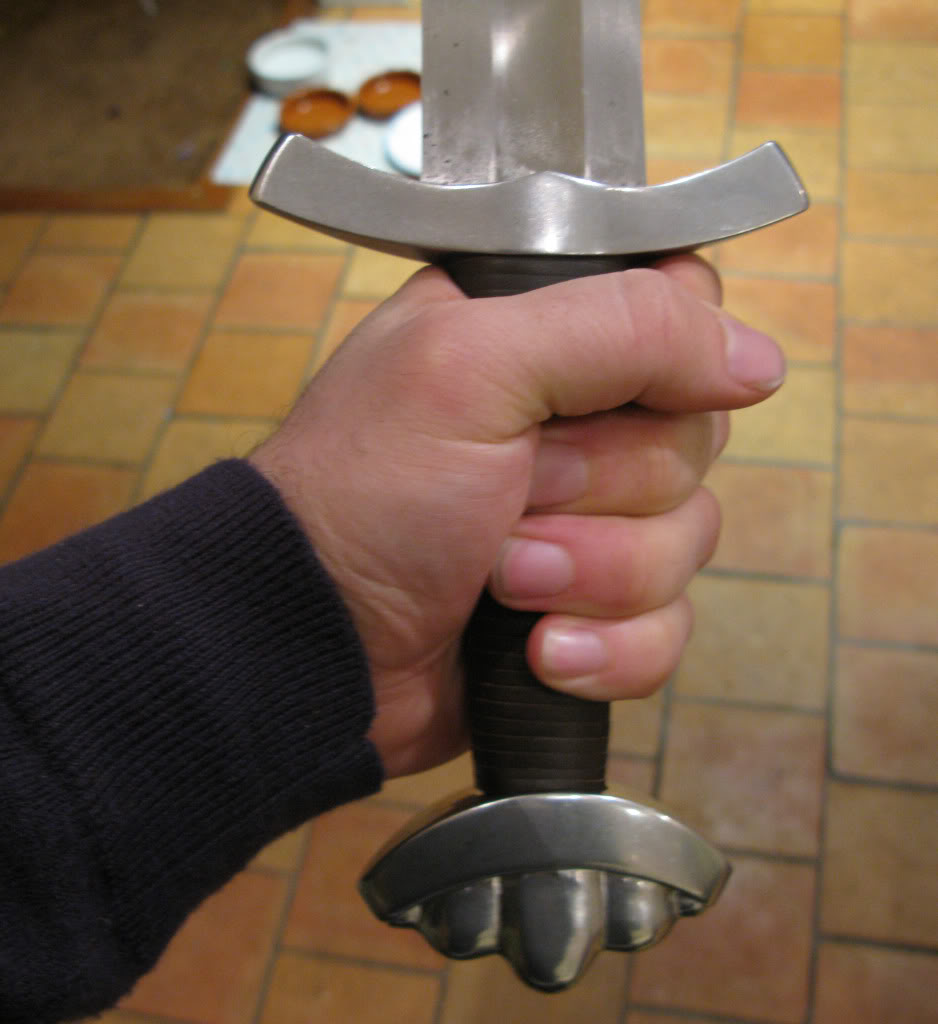
Misaligned fittings.
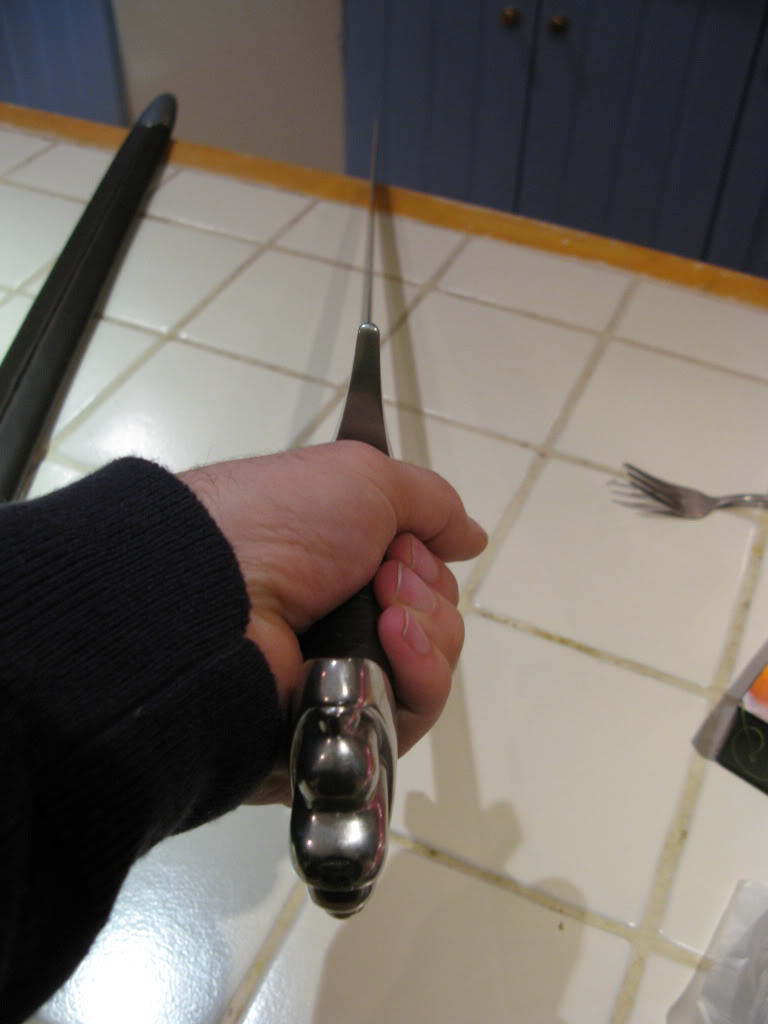
Once I received the Tinker viking sword I set about comparing it to my Albion Squire Line Vinland. I found that the Tinker was superior to me in handling performance but lost in the aesthetics department along with the worst point being that the grip is just too long. I would dearly love to shorten the grip but I don't think I will be able to re peen it sufficiently well enough. Looking through one of my books I accidentally found the same sword fittings that Tinker chose to replicate.
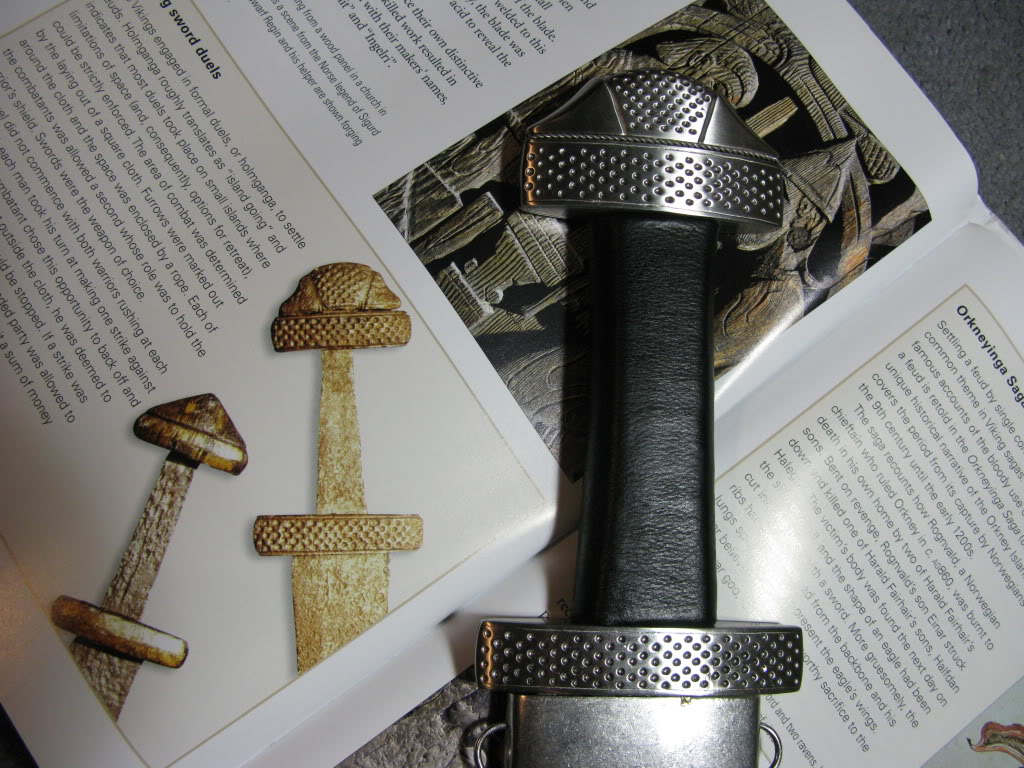
Shot of my Albion Vinland next to the H/T viking to compare grip lengths.
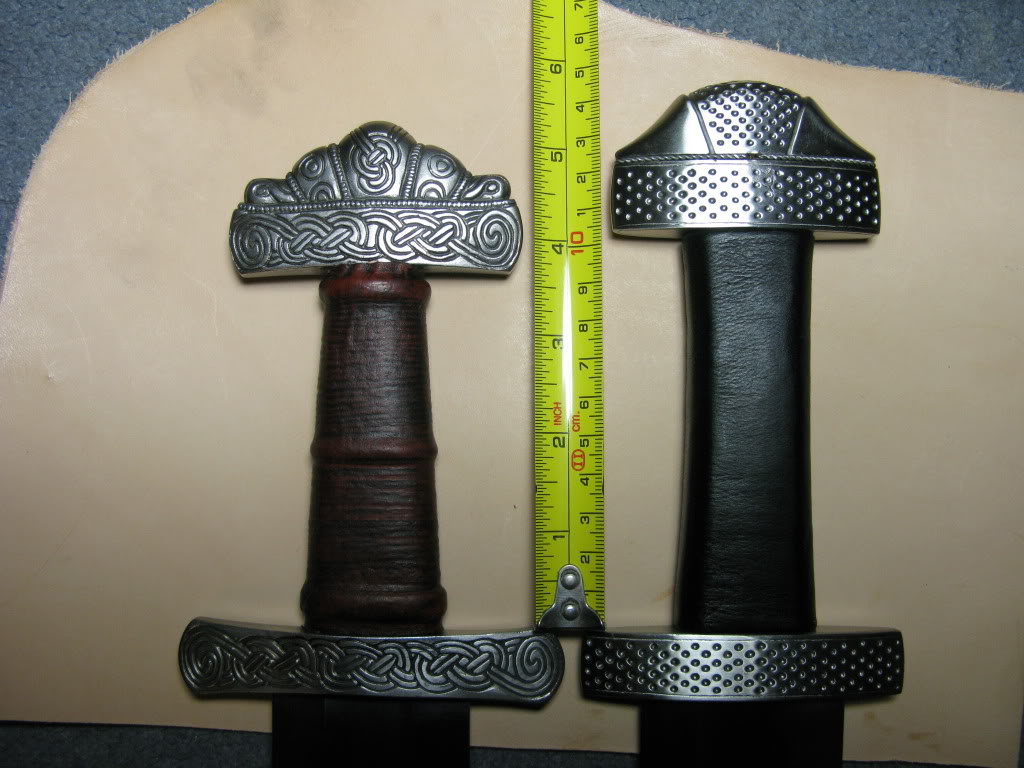
Tinker being held in hammer grip.
